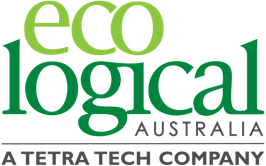To the Red Planet and Back: We Speak with Emily Bathgate about her NASA experience
Monday, 26 September, 2016

ELA Graduate GIS Officer Emily Bathgate has always had a love of space, Deep Ocean and the unknown. While studying Marine Biology at UTS Emily was given the opportunity to travel to the Californian NASA centre after a successful application to the VSSEC-NASA Australian Space Prize.
The prize saw Emily working under Dr Carol Stoker as part of a 12-week NASA Ames Academy for Space Exploration intensive internship. The program included practical experience as well as tours and presentations by key NASA staff.
Emily’s individual project under Dr Stoker saw her analysing the mineralogy of a Mars analogue site near the Mars Desert Research Station, Utah. The analogue data from Earth is used to compare with the data from Mars, these sites are chosen due to their similarity to Martian geology and geomorphology.

During the internship Emily also undertook a group research project to develop building materials to create habitats in-situ on Mars. This process resulted in the interns exploring ways to develop construction materials combining bacteria with the existing dirt and water on Mars to create cement.
Emily now applies the skills learnt from mapping the terrain of Mars to map Earth’s terrains in ELA’s Geographic Information Systems teams.
‘Although the projections are different, the processes of mapping Mars and Earth are actually the same.’
Emily has also continued to advance her expertise in the field
through her current PhD project looking at the mineralogy of meteorites
and other Mars analogue minerals. She will present a paper on the use of
stratospheric balloons to simulate satellite constellations
for educational use at the International Astronautical Congress in
Adelaide this month.
‘There is so much we can learn about our own planet. Everything we learn from other planets we can apply on our own planet and vice versa. I want to contribute to society by using this information to help find new ways to improve life on Earth’

